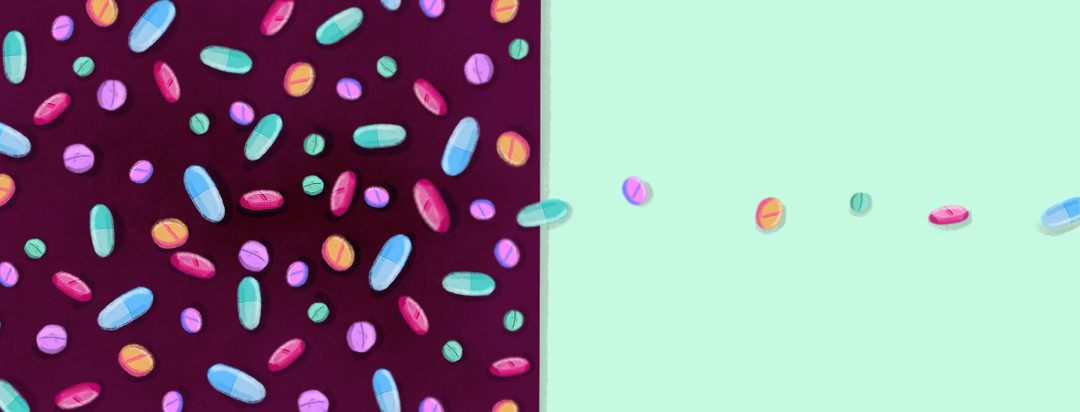Why Are "New" Eczema Treatments Taking So Long?
At the More Than Skin Deep - Eczema Patient-Focused Drug Development Meeting, I received the opportunity to deepen my understanding of the extensive process of drug development.
Patient perspective
As an individual living with eczema, I was always more concerned about why there weren’t more treatments available or why doctors continuously prescribed the same drugs that were clearly not as effective as they should or could be. I never took the time to really think about how drugs were made or the amount of time, people, research, and money that went into it.
So when Jill Lindstrom, MD, Deputy Director at the Division of Dermatology and Dental Products at the FDA, spoke about the extensive process of drug development at the More Than Skin Deep meeting, I became fascinated to learn more.
Food and Drug Administration’s (FDA) role
Before we can move into understanding the different parts of the process, we must first understand FDA’s role. The FDA is an agency within the Department of Health and Human Services. Their mission is to promote public health through safe and effective drugs, as well as protect public health through promoting the safe use of marketed drugs and ensure their quality and integrity. They oversee the pharmaceutical industry and can incentivize drug development, but they cannot direct it.
Because the process of drug development is long and difficult, the FDA supports drug developers throughout the process in different ways. Drug developers must engage with the FDA when a drug candidate moves from non-human studies to human studies and before marketing; all other support from the FDA is offered but not required.
Let’s get to the juicy part.
Drug development process
Drug development is driven by the state of science and marketing. Pretty much, if we want more treatments available to us, we must show that there’s a need for it through research and marketing capabilities. (I think we’re doing a good job at this point showing that there are unmet needs in the eczema community and there are over 30 million Americans who live with this condition).
I was taken aback to hear that the drug development process (de novo drug discovery and development) takes anywhere from 10 to 17 years, clinical trials alone taking 6 to 7 years on average. Even more surprising, was hearing that about 10-12% of these drugs entering clinical testing actually get approved. Not to mention, the average cost to develop each successful drug is estimated to be over $2 billion. While these numbers are daunting, they gave me a deeper understanding of the rigorous drug development process.
Below, I summarized the process into 4 areas:
- Pre-clinical
- Clinical trials
- Market application review
- Post-action
Pre-clinical
There are multiple ways researchers discover new drugs, from new insights into a disease process to various tests of molecular compounds showing possible beneficial effects against diseases, to new technologies, and more.
Once a drug compound or “candidate” shows promising results to be a successful medical treatment, researchers conduct experiments to gather further information. This is where we enter pre-clinical in which the drug is tested on non-humans (on animals or in the lab) and data is collected on its safety and efficacy. They look for how the drug candidate is absorbed, distributed, metabolized and excreted.
Before a drug candidate can move into human testing or clinical trials, a drug developer must submit an application to the FDA. In turn, the FDA will analyze and ensure the drug is safe enough to test on humans. (Thank God there's a process for this!)
Clinical trials
Clinical trials are considered to be the most rigorous and difficult process in the research and development of a drug. There are three phases of clinical trials before market application review, each phase meant to wean out drug candidates based on their toxicity, efficacy, and safety.
In the first phase, only 59.5% of drug candidates are approved and moved into the second phase; about 40% of drug candidates have too much toxicity. In the second phase, only 35.5% are approved and moved into the third phase. And at the third phase, considered to be the larger trials, is where the developer confirms the effects and the safety of the product.
Market application review
Only about 62% are approved from the third phase and can move into submitting a new drug application to the FDA. The FDA will review all of the data collected during the clinical trials and analyze whether the drug is safe enough to be legally marketed to the public. After reviews, and because they’ve done all the leg work beforehand, about 90% get approved to marketing.
Post-action
Once a drug candidate is approved for marketing by the FDA, the drug developer can then focus on how they will be presenting the drug to the public. This includes following specific and strict guidelines on packaging, labels, commercials and more.1
Newfound respect
Understanding the drug development process has given me newfound respect towards pharmaceutical companies and drug developers, as well as the vital role of the FDA. Without their rigor and endurance to develop a drug, and without the overseeing of the FDA, many people will be dying from diseases than healing from them. After reading this, may you too find respect for the process.

Join the conversation